Дорогие друзья, не секрет, что пользователи, работающие на базе Linux, вечно задирают нос перед теми, кто работает на Windows. Они говорят, что для Windows нужно устанавливать приложение минимум 10 минут, нажимая большое количество кнопок, ковыряться с галочками выбора. А перед тем как, собственно, установить приложение, нужно найти официальный сайт программы, при этом не заблудившись в интернете. Пользователи же Linux гордятся тем, что любую утилиту могут установить с терминала, выполнив определённую команду.
В Windows имеется как и в Linux возможность установки, удаления или редактирования программ с помощью команд.
Разработчики утверждают, что в Windows 10 также появится возможность быстрой установки, обновления и удаления различного обеспечения из терминала системы. Осталось дождаться официального релиза. Но можно и не дожидаться релиза, а прямо сейчас воспользоваться удивительной функцией, которая позволит пользователю установить программу из командной строки. Однако это ещё не все сюрпризы: утилита позволит также удалить, обновить, открыть и закрыть программу. Интересно? Давайте познакомимся с Chocolatey поближе.
Установка программы через командную строку
Сейчас мы будем пробовать управлять программами более удобным и очень похожим способом на то, как это выполняется в среде Linux. И в этом нам поможет специальный сервис Chocolatey, пакетный менеджер для Windows. Клиент Chocolatey представляет собой утилиту, предназначенную для работы в консоли. Давайте сразу попробуем её установить. Для установки откроем терминал с правами администратора. Нажмите правой кнопкой мыши на меню Пуск и нажмите пункт «Командная строка» (с правами администратора). Теперь скопируем следующий код:
@powershell -NoProfile -ExecutionPolicy unrestricted -Command «iex ((new-object net.webclient).DownloadString(‘https://chocolatey.org/install.ps1’))» && SET PATH=%PATH%;%ALLUSERSPROFILE%\chocolatey\bin
Вставляем и нажимаем клавишу Enter. Теперь нужно закрыть консоль, чтобы данные по переменным освежились.
На сервисе Chocolatey собран большой каталог утилит и приложений: на данный момент более 2000 утилит. Посмотреть их можно на официальном сайте https://chocolatey.org/packages. Итак, пришло время узнать, как установить любую программу через командную строку:
Снова открываем терминал от имени администратора. Копируем текст, представленный справа от программы на сайте https://chocolatey.org/packages. Например, для установки браузера Google Chrome представлен следующий код:
choco install googlechrome -y
Копируем его и вставляем в терминал. Не забываем после кода с сайта писать комбинацию -y. Жмём Enter. Теперь осталось дождаться завершения установки браузера. После чего можно закрыть окно терминала.
Как можно было заметить, браузер Google Chrome очень быстро установился. Нам не пришлось кликать никакие кнопки, выбирать место сохранения файлов (по умолчанию используется диск C). Кстати, начинающим пользователям можно сделать в блокноте набор своих любимых приложений, чтобы каждый раз не заходить на сервис Chocolatey. Чтобы удалить программу через командную строку, введите код uninstall, затем — название программы. Например, choco unistall ccleaner.
ВНИМАНИЕ. Сервис работает только с теми пакетами, что устанавливаются через него. То есть если какое-либо ПО недоступно для установки через Chocolatey, то и удалить вы не сможете его таким способом.
Как запустить или удалить программу через командную строку
Теперь рассмотрим способ, позволяющий открыть программу через командную строку. Это можно сделать за три очень простых шага. Приступим:
- Открываем терминал операционной системы Windows.
- В появившемся окне пишем полный путь до расположения файла запуска приложения. Например, D:/Files/chrome.exe
- Жмём Enter и ждём, пока система откроет то, что нам нужно.
Пришло время узнать, как закрыть программу через командную строку. Для этого нам понадобится дополнительное обеспечение taskkill. Начнём:
- Запустите уже знакомый вам терминал.
- Напишите tasklist и кликните по клавише Enter.
- В появившемся списке смотрим номер утилиты, которую вы хотите закрыть. Например, браузер Chrome с номером PID
- Пишем код: taskkill/ pid 24292 /f — и жмём клавишу Ввод. Готово!
Подведём итоги
Уважаемые читатели, сегодня мы рассмотрели, казалось бы, на первый взгляд, сложную тему. Но теперь вы знаете, что можно очень легко установить или удалить некоторые программы через командную строку с помощью сервиса Chocolatey. А также вы знаете, как открыть или закрыть приложение через тот же терминал. Надеемся, что у вас получилось всё сделать правильно и не осталось никаких вопросов по теме. Расскажите в комментариях своё мнение и впечатление!
Вы только что установили Windows и перед вами стоит задача установки совта: браузер, архиватор, антивирус, читалка PDF-ов, файловый менеджер и так далее.
Да, можно скачать это всё из интернета, через модный браузер Internet Explorer. Но это значит, что сначала нужно загуглить нужную программулину, перейти на сайт разработчика, скачать её, установить. Не много ли половых излишеств?
Так же можно установить совт с вашего файлового хранилища, которое вы, возможно, собирали всю жизнь и у вас там есть «ВСЁ». Неплохой вариант, только опять же, каждую программу придёться «прокликать», к тому-же версии их будут явно устаревшими.
Ну а можно запустить PowerShell, ввести пару простых команд и установить приложения, без рекламного мусора, баннеров и расширений в браузеры.
Установим репозиторий Chocolatey
Для начала запустим PowerShell. Обязательно от имени Администратора.
По умолчанию уровень безопасности PowerShell — Restricted, т.е. ему не разрешено выполнять и создавать сценарии, это сделано для того что бы предотвратить исполнение вредоносного кода. Поэтому первым делом мы изменим уровень безопасности на Bypass, т.е. разрешим выполнение всех сценариев, но запретим вывод предупреждений и запросов. Понятно, что после установки нужного нам совта — мы всё вернём в зад.
- Для изменения уровня безопасности — пишем в командной строке PowerShell:
Set-ExecutionPolicy Bypass -Scope Process -Force
- Добавляем репозиторий Chocolatey и делаем его доверенным. Именно с него будет скачиваться весь совт. Последовательно набираем 2 командлета (так называются в PowerShell команды):
Get-PackageProvider —Name Chocolatey -ForceBootstrap
Set-PackageSource -Name Chocolatey -Trusted
Всё. Теперь ваша система готова. Давайте что-нибудь установим.
Установка приложений с помощью командлетов Powershell
Нерекомендуемый способ
Для примера установим браузер Chrome.
Пишем в командной строке повершела командлет Install-Package, потом через пробел параметры, а именно: название нашего приложения — googlechrome, потом ключ -ProviderName, которым мы явно зададим с какого репозитория скачивать совт и название репозитория chocolatey. В самом конце добавим 2 ключа: -Verbose и -force. Первый для того, что бы видеть процесс инсталляции, второй — для игнорирования запросов, например на перезапись файла.
В конечном итоге у вас должна получиться такая строка:
Install-Package googlechrome -ProviderName chocolatey -Verbose -force
Далее для установки другого приложения вам нужно только изменять названия пакета. Например, что бы установить архиватор WinRAR — нужно изменить googlechrome на winrar:
Install-Package winrar -ProviderName chocolatey -Verbose -force
Для того, что бы посмотреть, что вы там себе наустанавливали — нужно набрать командлет Get-Package без всяких параметров:
Get-Package
Он выведет на экран список всех установленных приложений.
Но Opera, Mozilla FireFox и ещё фигова туча приложений, которые есть в репозитории chocolatey, у вас не будут устанавливаться. Повершел ругнётся на неизвестный ему командлет, например на:
«Get-OSArchitectureWidth» не распознано как имя командлета, функции, файла сценария или выполняемой программы. Проверьте правильность написания имени, а также наличие и правильность пути, после чего повторите попытку
Более того, установить такое приложение другим способом, уже тоже не удастся. Система будет ругаться на то, что программа установлена. Поэтому, если вы столкнулись с такой ошибкой, обязательно наберите команду Uninstall-Package и название пакета, например:
Uninstall-Package opera
Короче, давайте срезюмируем. Данный метод имеет хоть и один, но очень серьёзный недостаток: несмотря на наличие приложения в репозитории — далеко не каждое может быть установлено. Выяснить это можно исключительно методом научного тыка.
Поэтому рекомендую использовать собственную утилиту проекта Chocolatey.
Установка приложений с помощью Chocolatey
Рекомендуемый способ
Репозиторий Chocolatey содержит постоянно обновляющуюся базу из более чем 5800 бесплатных и условно-бесплатных приложений.
Устанавливаем модуль Chocolatey. Он имеет свой синтаксис, зато приложения можно будет устанавливать, не только из повершела, но и из командной строки. Это делается всего одной командой:
iex ((New-Object System.Net.WebClient).DownloadString(‘https://chocolatey.org/install.ps1’))
Если ругнётся на:
Невозможно загрузить файл \chocolatey\chocInstall\tools\chocolateyInstall.ps1, так как выполнение сценариев отключено в этой системе.
То измените уровень безопасности командой выше.
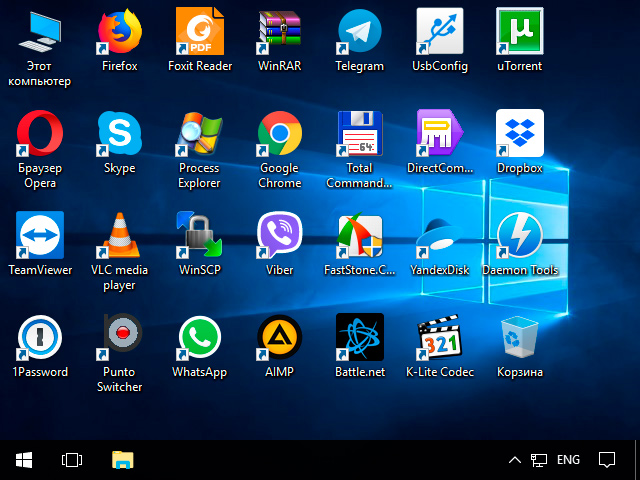
Для полноценного управления установкой приложений нам потребуется 5 команд:
- cinst название_пакета — установка приложения
- cuninst название_пакета — удаление приложения
- cup название_пакета — обновление приложения
- cup all — обновление всех установленных приложений
- clist название_пакета — поиск приложений
Например, для установки браузера Opera — запустим экземпляр командной строки CMD или PowerShell от имени Администратора. В адресную строку введём название команды cinst, название приложения opera и пару параметров:
cinst opera ––force ‑y
Параметр ‑‑force — будет игнорировать все ошибки, а так-же используется для принудительной переустановки приложения.
Ключ ‑y — будет отвечать на все вопросы скриптов, установщика и системы утвердительно.
Для удаления — набирайте cuninst, название программы и ключ -y, например:
cuninst opera -y
А как же искать приложения? Для примера узнаем какое название имеет в каталоге Chocolatey десктопный Telegram. Для этого пишем команду clist и через пробел предполагаемое название пакета:
clist telegram
Как правило, первая же строчка и будет названием пакета с указанием её текущей версии в каталоге.
По такому же принципу, вы можете обновлять приложения. Команды для обновления сразу всех программ или по отдельности были чуть выше.
Как то так.
How to install software using cmd

Today, there are multiple guides on how to install software on a remote computer using cmd. One of the quickest routes is by running commands directly on the system’s command prompt.
This method is a useful alternative if you want to deploy several apps simultaneously, avoid running a standard GUI-based installation wizard, or install software on a remote computer in your network without user interaction.
In this guide, we’ve compiled all the information you’ll need to install software through cmd successfully.
Getting ready to install software from the command line
Before you begin the cmd procedure to install software, it’s important you have everything you need to make the installation a success. To do so, here’s a short list we’ve compiled to help you remotely install software cmd efficiently:
- • Administrator privileges: Log in as an administrator; else, have the administrator account password on the target remote PC if it’s not in the same domain.
- • Installation packages: Download .msi files of all the applications you want to install and then write down the full path to their location.
- • Firewall settings: Ensure that the firewall on the remote computer does not block “File and Printer sharing” traffic on port TCP 445.
Install from cmd on a local machine
Here’s a brief breakdown of how to install software with cmd:
- Open the Start menu and type “cmd.exe.”
- Next, right-click “cmd.exe” from the “Programs” list, then proceed to click “Run as administrator.”
- After that, type the full path to the file’s directory after the “cd” command. For example, \cd C:\users\admin\desktop.
- Type this command and then press “Enter”:
msiexec filename.msi
Where “filename.msi” is the name of your file.
Install software remotely using cmd
To remotely install software using cmd, follow these steps:
- Open a command prompt as an administrator;
- Copy the MSI package on the remote computer using this command:
copy c:\users\username\downloads\APP.msi \\ENDUSER-PC\C$Here, “APP.msi” is the name of your installation package, and “ENDUSER-PC” is the remote computer’s name.
Furthermore, you can also use the remote computer IP address rather than the computer name.
- When in the command prompt, change the current directory to “C:\SysInternals” with the following command (you may need to download Windows Sysinternals Tools first):
cd c:\SysInternals - Then, run the following command to start installing the app on the remote computer:
PsExec.exe \\ENDUSER-PC\ -i -s msiexec.exe /i "c:\APP.msi" /qn /norestart
The PSExec command will launch the .msi installer on the remote computer. This, in turn, will install your app in quiet mode (/qn) without user interaction.
Using cmd Windows Package Manager (winget)
With the Windows Package Manager, you can easily research, download, install, update, and remove apps on Windows 11 or 10 installations with Command Prompt. This command-line tool reduces the number of steps it would have taken using a different method.
Single app installation via winget:
- Open the Start menu.
- Search for Command Prompt, then right-click the top result.
- From the menu pane, select the Run as administrator option.
- Then, type the following command to install an app with the winget command and press Enter:
winget install "APP-NAME"
Remember to change “APP-NAME” for your actual app’s name. In addition, you only need quotation marks when the name consists of multiple words with spaces. For example, to install HelpWire, the command will be widget install HelpWire.
Multiple apps installation:
- Click on Start.
- Search for the Command Prompt.
- Next, right-click on the top result to select Run as administrator option.
- Type this command to install multiple apps with the winget command and press Enter:
- winget install “APP-NAME-1” -e && winget install “APP-NAME-2” -e
- The next step is optional: Type the following command to install multiple apps by ID and press Enter:
- winget install –id=APP-NAME-1 -e && winget install –id=APP-NAME-2 -e
When in the commands, remember to change the “APP-NAME-1” and “APP-NAME-2” for the names of the apps you’re installing. If you need to process more app installations, simply add a space and && along with the app installation command.
Install software via cmd on multiple remote machines using WMIC
WMIC (Windows Management Instrumentation Command-Line) is a potent tool that allows you to remotely install software cmd easily. Unfortunately, the tool doesn’t see much use due to a lack of easily accessible documentation.
In this section, we’ll extensively examine the most straightforward method: an MSI installation file that requires no options to be located on each remote user’s local drive. Let’s dive right in.
- Load up the command shell with the appropriate access permissions:
Runas /user:DomainAdminAccount@DOMAIN cmd… these permissions will prompt us for the credentials of our DomainAdminAccount. Once authentication is complete, we’ll be handed a command shell that runs as the Admin.
- Next, step into WMIC by entering the following command:
u: \>wmicwmic:root.cli>
(We could have easily jumped into WMIC directly from the run-as command… this just helps us to break out the steps)
- Call the installation for a list of machines using the WMIC’s ability to handle a flat text file as input. These inputs allow the nodes to run installations on a list of machines (in our earlier example, it’s stored on the admin’s local hard drive in C:\computers.txt) by running the following command:
/node::@c:\computers.txt product call install true,",c:\PathToYour\File.msiThis command will iterate through the list in computers.txt… and skip over invalid nodes (e.g., the machine is turned off). After that, it’ll ask for an installation confirmation for each machine.
In this post, we are going to discuss on How to Install program from Command Line Windows 10, How to install software in Windows using Command Prompt in Windows 10. You will be guided with easy steps/methods to do so. Let’s starts the discussion.
‘Install program from Command Line Windows 10’:
It is quite simple & easy to install any software in Windows 10 computer through the application/program installation setup executable. To do so, you need to find the executable of program installer setup or extract the setup file from zipped/compressed file, and once setup file found or extracted, you need to right-click on it and select ‘Run as Administrator’, and then follow on-screen instructions to finish software installation and then it will be done.
On other hand, it is also possible and quite simple & easy to install any application/program in Windows 10 computer through Command Prompt. It means you can also try to install a application/program from Command-Line in your Windows computer. If you are looking for the ways to install software in Windows using Command Prompt in Windows 10 computer, then you are in right-place for this. Here, you are provided with easy ways to do so. Let’s go for the steps.
How to Install program from Command Line Windows 10?
Method 1: How to install software in Windows using Command Prompt?
Step 1: Type ‘cmd’ in Windows Search Box and press ‘SHIFT + ENTER’ keys on keyboard to open ‘Command Prompt as Administrator’
Step 2: Type the name of file directly if it is ‘.exe’ file, for example, ‘setup.exe’ and hit ‘Enter’ key on keyboard to execute. This will immediately run the installer with administrator permission.
Method 2: What is command to Install and run program from Command Line Windows 10?
Step 1: Open ‘Command Prompt as Administrator’ in Windows PC, type the name of program that you want to run.
Step 2: If it is on PATH System variable, it will be executed. If not, you will have to type the full path to the program. To run ‘D:Any_Folderany_program.exe’ type ‘D:Any_Folderany_program.exe’ on the Command prompt and press Enter.
Method 3: How to run EXE file from Command Prompt?
Step 1: Open ‘Command Prompt as Administrator’ using above method and go to location of your folder using Command Prompt, run the exe from there.
Step 2: Alternatively, you can create a batch (.bat) of two lines.
Method 4: How to install a program manually?
Step 1: Find and double-click on executable of program setup file
Step 2: Follow on-screen instructions to finish installation. Once installed, check if it works for you.
Method 5: How to install a program from CD/DVD?
Step 1: Insert the program/software disc into your computer’s disc drive or tray, label side up
Step 2: Click the option to run Install or Setup and follow on-screen instructions to finish installation.
Fix Windows PC issues with ‘PC Repair Tool’:
‘PC Repair Tool’ is easy & quick way to find and fix BSOD errors, DLL errors, EXE errors, problems with programs/applications, malware or viruses infections, system files or registry issues, and other system issues with just few clicks.
Conclusion
I am sure this article helped you on How to Install program from Command Line Windows 10, How to install software in Windows using Command Prompt in Windows 10 with easy steps/methods. You can read & follow our instructions to do so. That’s all. For any suggestions or queries, please write on comment box below.
Installing apps on Windows is a time-consuming process. The user has to search for the recent app version, download the installer file, then manually install the app (next, next several times), and uncheck unwanted bundleware.
The problems do not end here. Software installers in Windows have different ways of setting up apps, registries, and configurations. With so many combinations, people simply avoid the hassle of updating apps. We’ll show you how to install software using the command prompt (CMD) in Windows 10.
Solution: Chocolatey (Package Manager)
According to Microsoft Docs, a package manager consists of command-line tools and a set of services to automate the entire software management process. The package consists of software binaries, configuration files, and metadata. And the metadata, in turn, has the app details and the list of dependencies to make it work properly.
Till now, Windows OS lacked a comprehensive package manager. The launch of WinGet with new features and bug fixes (version 1.1) has raised some new doubts. It makes sense to ask, why you should choose a third-party package manager called Chocolatey? Here are some reasons:
- If you’re using Winget, at times, you’ll need to click through a setup wizard or security prompt, which diminishes the benefit of having a command-line tool.
- Uninstall support, in comparison to Chocolatey, is still rudimentary. Sometimes it fails to manage dependencies.
- Only a few packages support upgrades on testing. It was unable to update apps, even though a newer version was available.
- A package manager can run scripts, provide server management, centralized reporting, custom configuration, and more. Winget can only handle few formats, like EXE, MSIX, and MSI.
- Chocolatey works with over 20+ installer technologies for Windows. It knows how to set up an app, registry, manage files and configuration, or any combination.
Installing Chocolatey in Windows 10
To install Chocolatey, you must fulfill the basic system requirements and have the patience to install a few scripts:
System Requirements for Chocolatey
Before you jump in, ensure your PC meets the following:
- Windows 7+/Windows Server 2003+ and above.
- PowerShell v2+ (minimum is v3 for install from this website due to TLS 1.2 requirement).
- .NET framework 4+ or above.
- Free space for Chocolatey CLI and a few GB’s for installing packages.
Installing Programs Using the PowerShell Method
Press Win + X and select Windows PowerShell (Admin). Then, you must ensure that Get-ExecutionPolicy is not restricted. Read our guide on PowerShell to know its importance.
If it returns Restricted, then run Set-ExecutionPolicy AllSigned or Set-ExecutionPolicy Bypass -Scope Process. Press Y to confirm the change.

Then, copy-paste the command:
Set-ExecutionPolicy Bypass -Scope Process -Force; [System.Net.ServicePointManager]::SecurityProtocol = [System.Net.ServicePointManager]::SecurityProtocol -bor 3072; iex ((New-Object System.Net.WebClient).DownloadString('https://community.chocolatey.org/install.ps1'))
Press Enter.
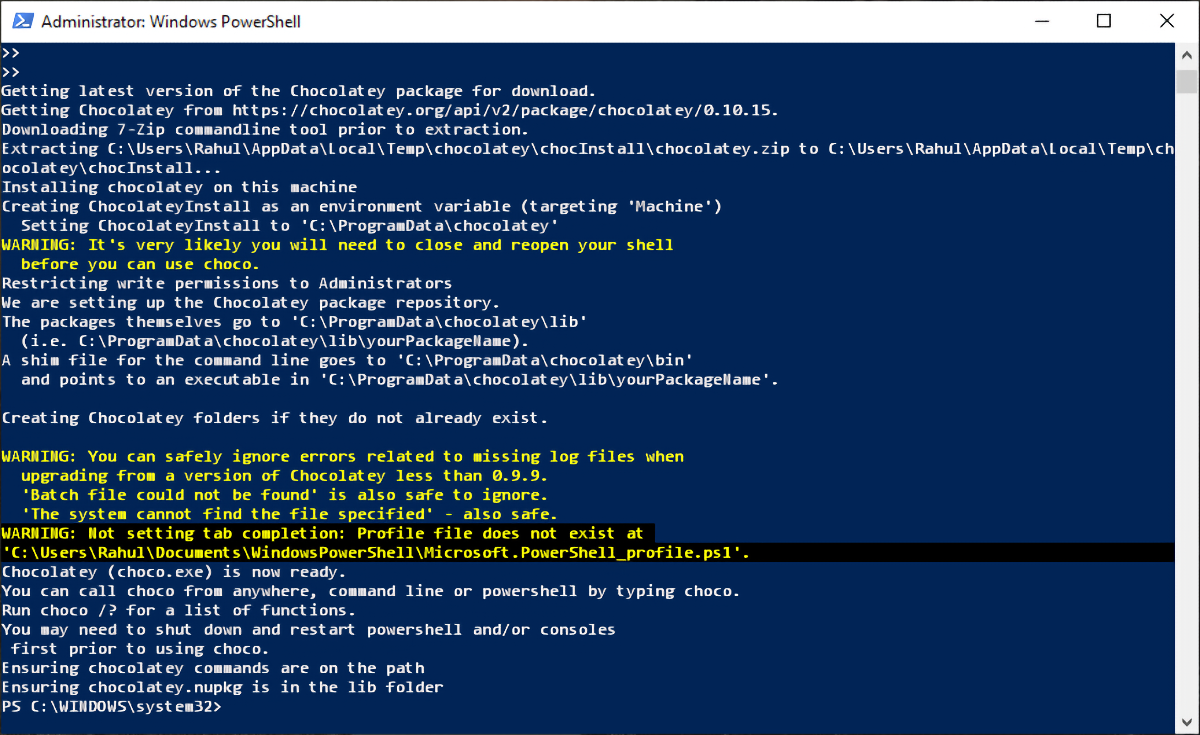
Within a few moments, Chocolatey will get installed and create a new folder in Program Data. All the packages go to \chocolatey\lib (there may be exceptions for .MSI installers). Once Chocolatey gets installed, restart the PowerShell and type in choco -? to see the list of commands.
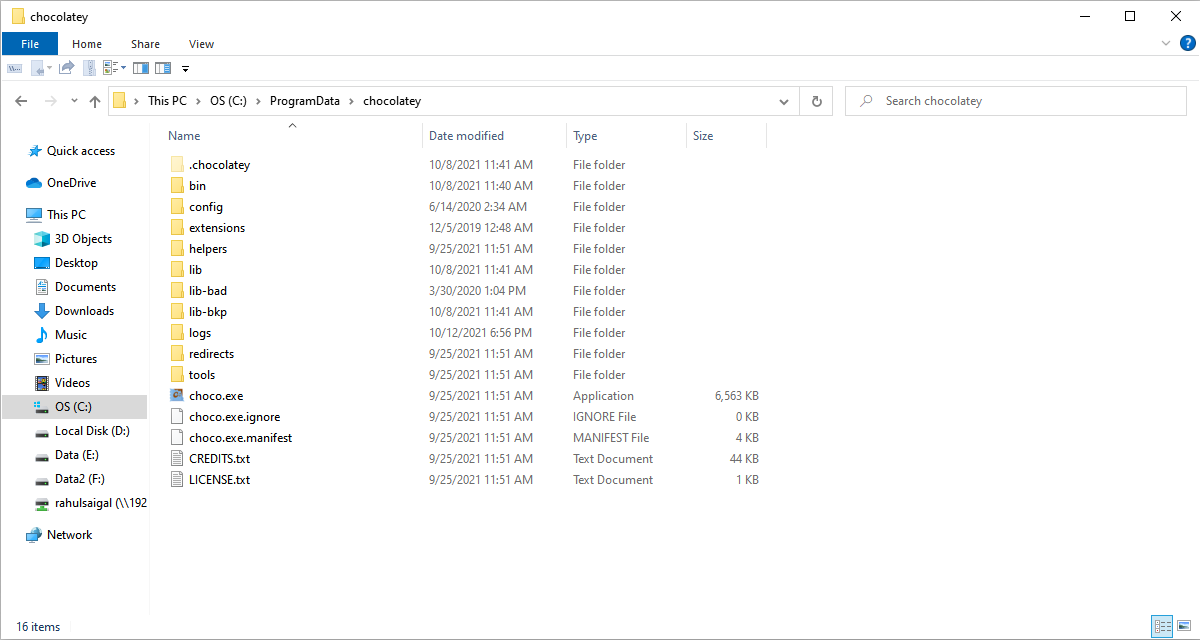
Installing Programs Using the Command Prompt Method
Press Win + X and choose Command Prompt (Admin). Then, copy-and-paste the command:
@"%SystemRoot%\System32\WindowsPowerShell\v1.0\powershell.exe" -NoProfile -InputFormat None -ExecutionPolicy Bypass -Command "[System.Net.ServicePointManager]::SecurityProtocol = 3072; iex ((New-Object System.Net.WebClient).DownloadString('https://community.chocolatey.org/install.ps1'))" && SET "PATH=%PATH%;%ALLUSERSPROFILE%\chocolatey\bin"
Press Enter. Restart the prompt and type in choco -? to see the list of commands.
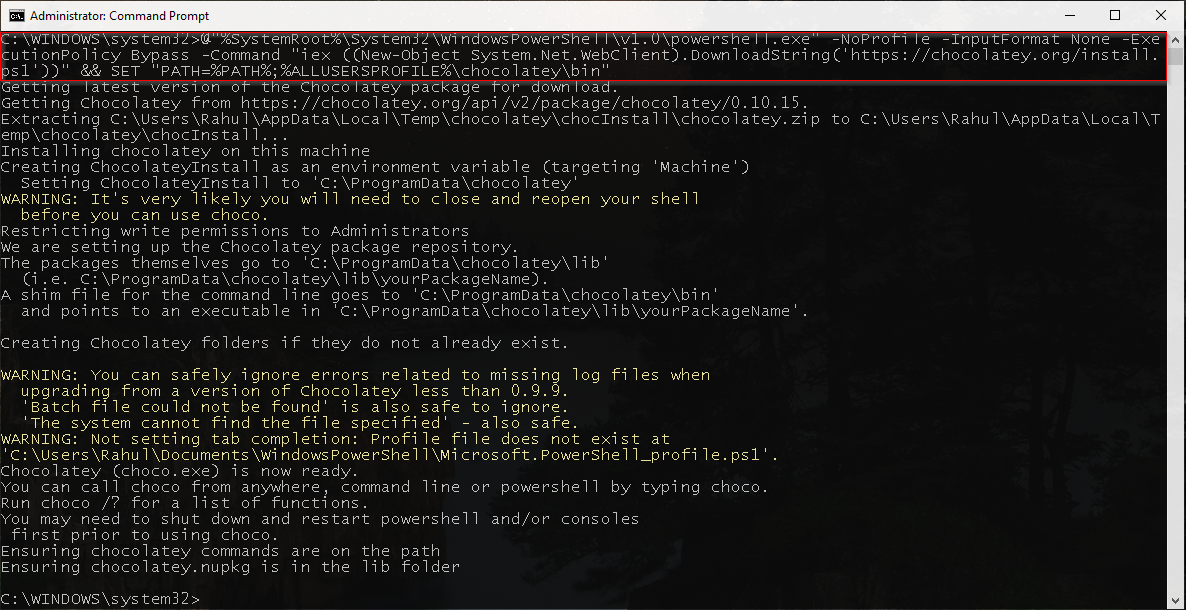
Chocolatey Packages
Chocolatey packages are a modified NuGet package. It is a compiled .nupkg file that consists of package metadata and additional data specific to Chocolatey. The package repository website has a huge collection of apps, and you can use them to install popular apps for Windows 10.
Every package submitted to the database undergoes a rigorous moderation process before it goes live. They include package validation, verification, virus scanning with VirusTotal, and more. On the left side, you’ll see the links to the package maintainer, validation check button in green, red, and yellow.
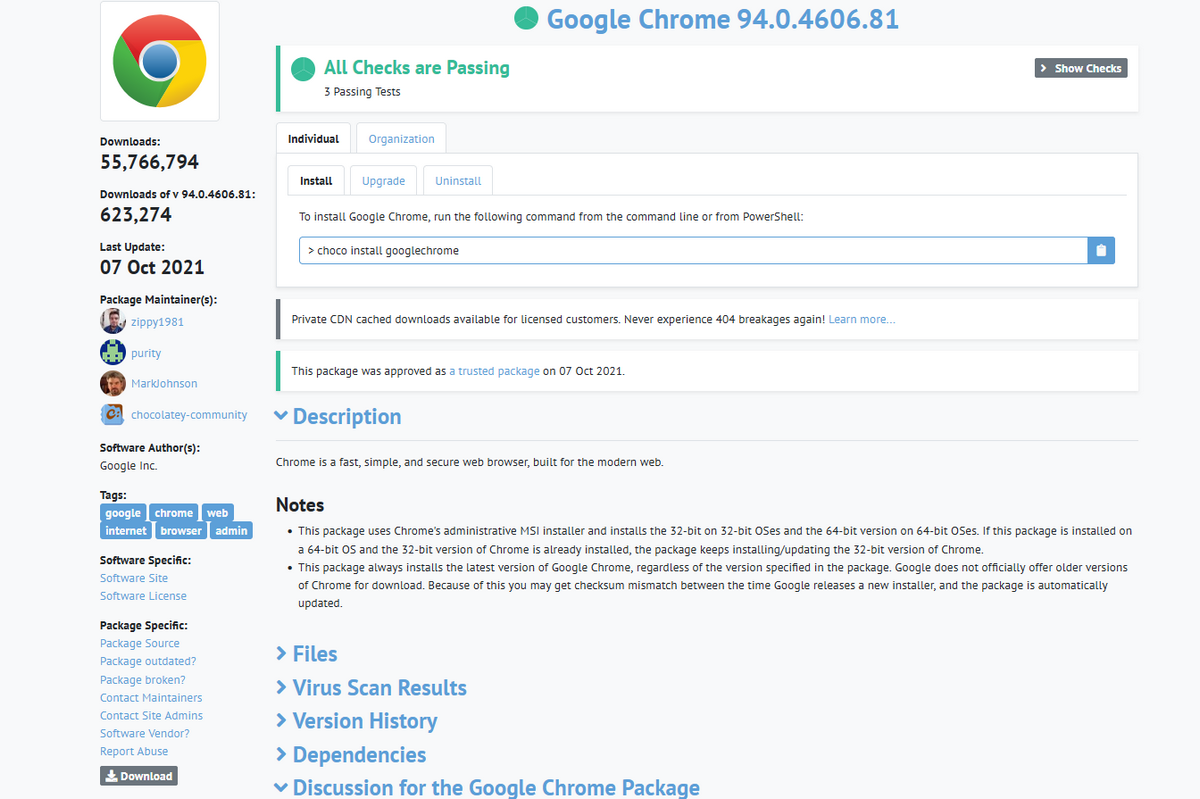
Under the Individual section, you’ll see the command to install, upgrade, or uninstall the app. The Version History list all the versions, including their changelog. At last, the section under Dependencies lists all the additional components required for an app.
How to Install Software Using Command Prompt or PowerShell
You have to follow some basic rules of syntax to install software from the command-line tool. The structure looks like
choco [command][package name]
“choco” is the short name of Chocolatey. The second prefix is the actual command, and the third is your app. Once you get into the habit, you’ll no longer have to consult the command reference list for software management.
Here are some popular commands, which you’ll frequently use. We’ll take the example of installing the GIMP image editor.
Install a Package
Head to the repository package site and search for GIMP. Then, type in:
choco install gimp
The command will download and install the app without requiring any action on your part. You’ll see the progress information in the console itself. In a few cases, your app might show windows, but that’s perfectly normal. Chocolatey will take care of all the installation steps automatically.
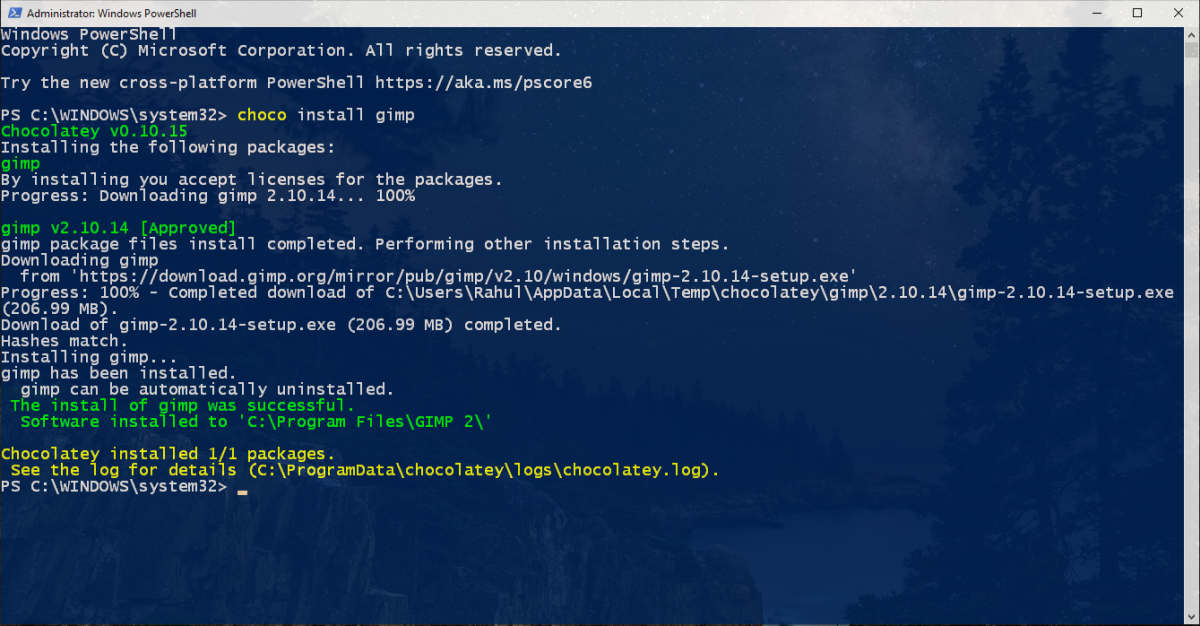
Uninstall a Package
Type in:
choco uninstall gimp
If an app has a list of dependencies, then Chocolatey will automatically remove those components from your system.
Search Your Package
You can even search for a particular package with this syntax:
choco search [package name]
For example, if you wish to install 7-zip, type in:
choco search 7-zip
Press Enter. Chocolatey will search for every app with the word “zip” in its database. If it’s there, you’ll find it in the results. Searching for a particular app requires a bit of practice.
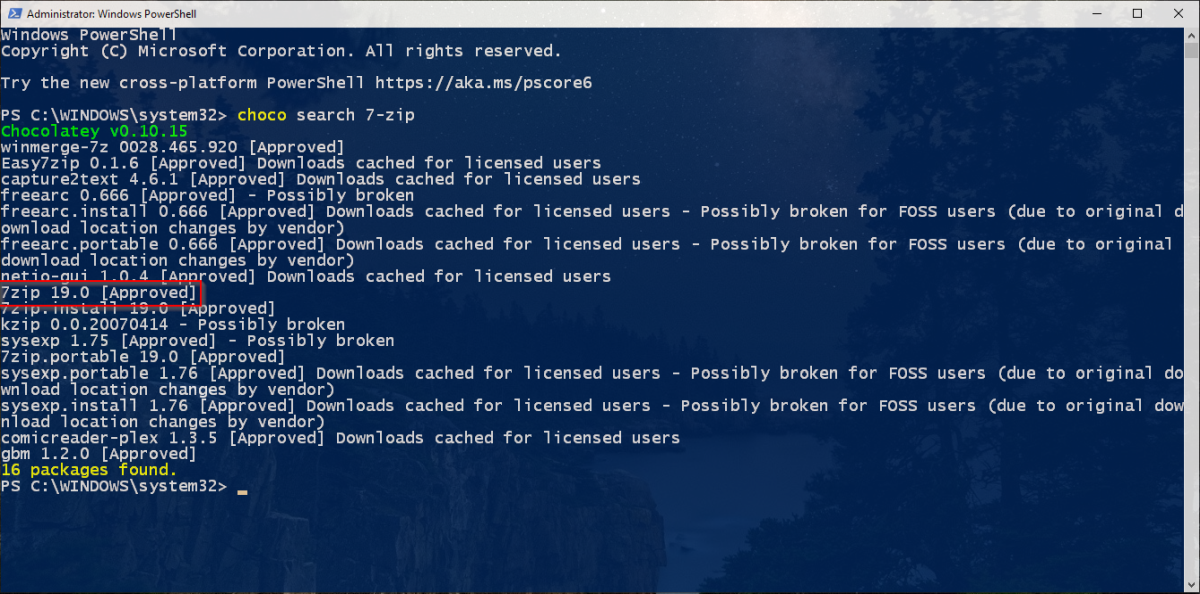
Upgrading a Package
To upgrade an app, type in:
choco upgrade [package name]
For example:
choco upgrade gimp
List of Outdated Packages
It’s also possible to see the list of all outdated apps. To make this work, you must install apps through Chocolatey. Type in:
choco outdated
 Is There a Chocolatey GUI?
Is There a Chocolatey GUI?
While the command-line tool is the preferred method for managing apps, some of you may like an actual app. Chocolatey GUI enables you to install, uninstall, update, and search for packages in a single place. To install it, type in:
choco install chocolateygui
To check for updates:
choco upgrade chocolateygui
As you launch the app, you’ll see two options in the left pane. This PC, as the name suggests, consists of packages installed on your PC. At the top-left is the search box and options to check for outdated packages, update all packages at once, and toggle between list/tile view.
Chocolatey is the remote package repository. At the top, you’ll see options to filter apps by version, include beta-release, popularity, and more.
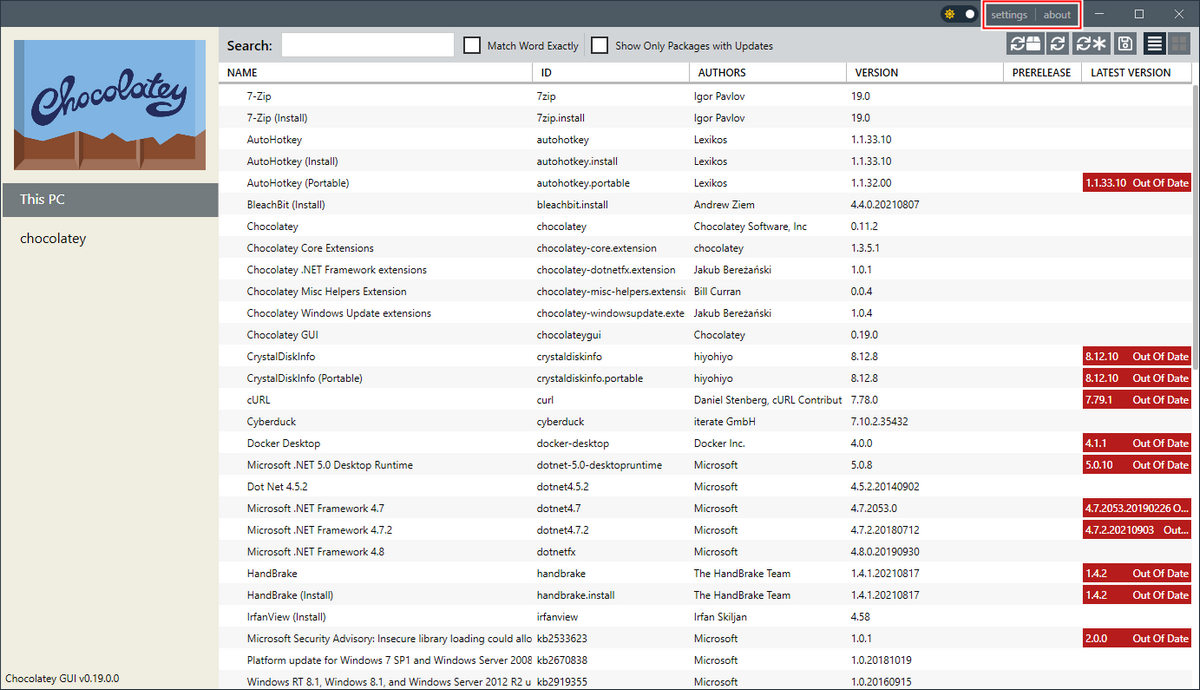
To update a single package, right-click it and choose Update. You can export the currently installed packages (as a .config file) with their version number and installation date. You can use this file to install packages on another machine.
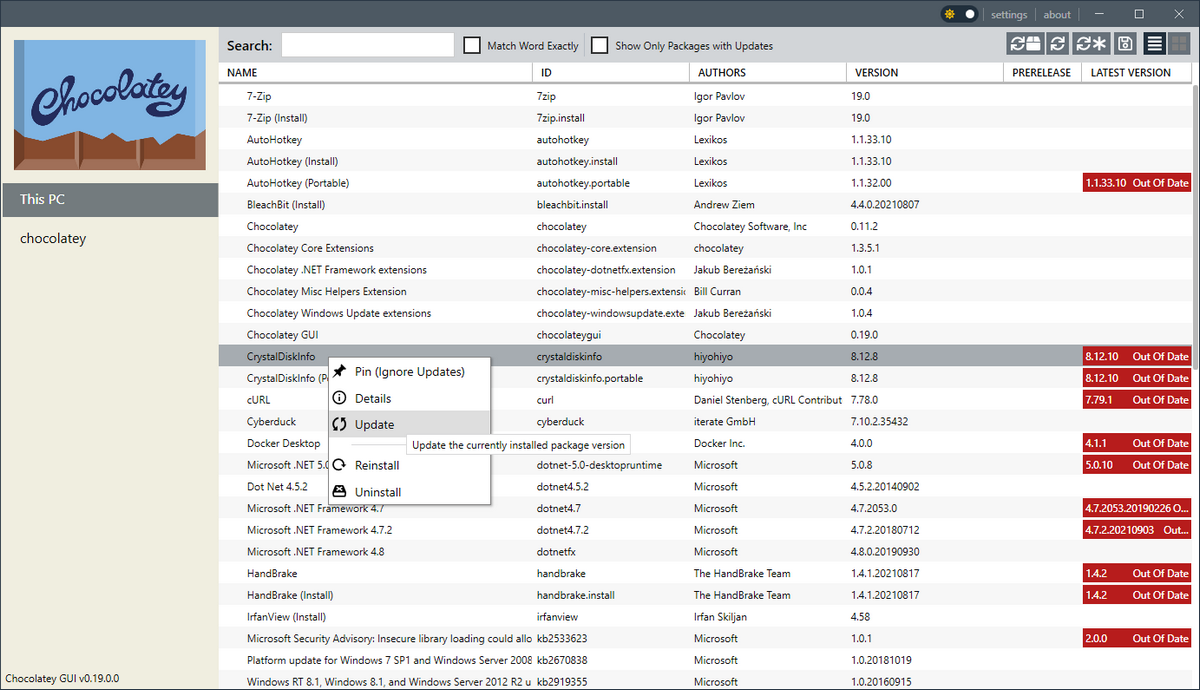
Install Your Next App With the Command Prompt
Many people still find it a hassle to update their apps. Chocolatey lets you install a dozen or more apps with just a few keystrokes. You can easily manage your apps without any security concerns or bundleware.
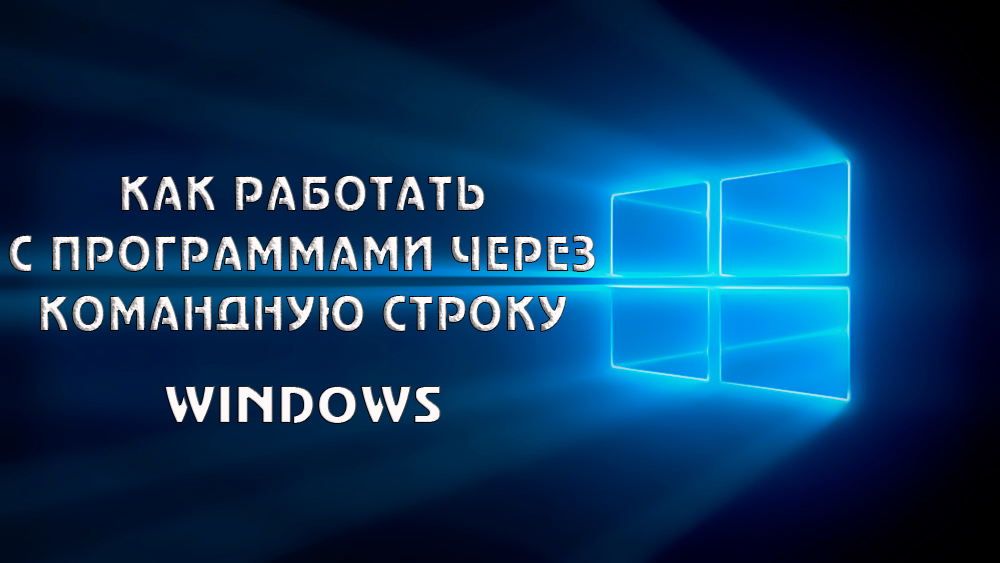
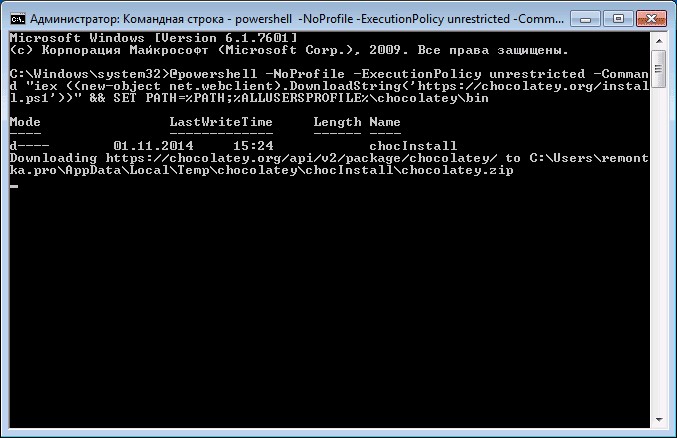
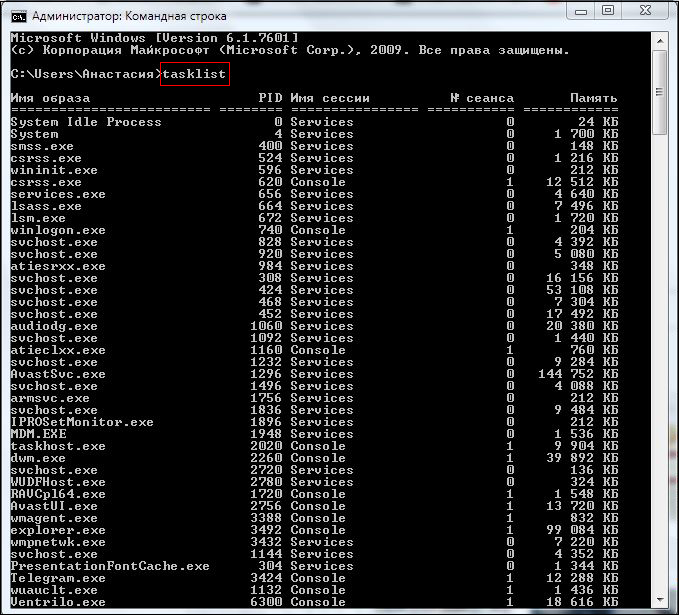

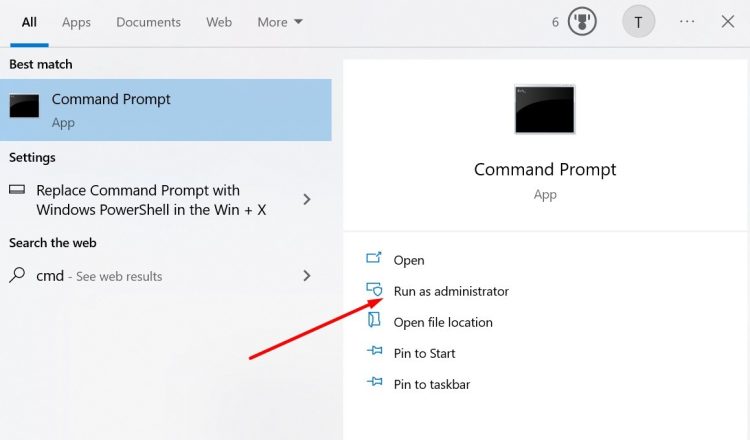
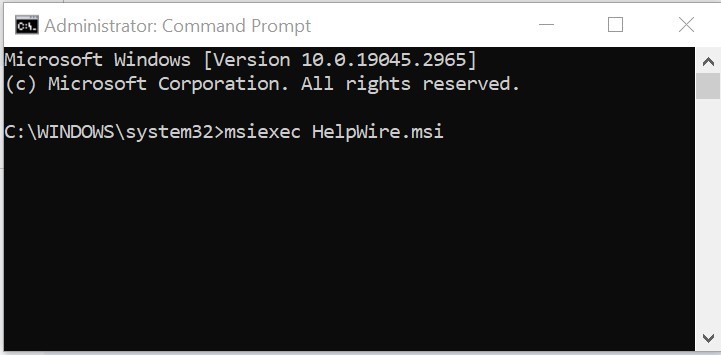
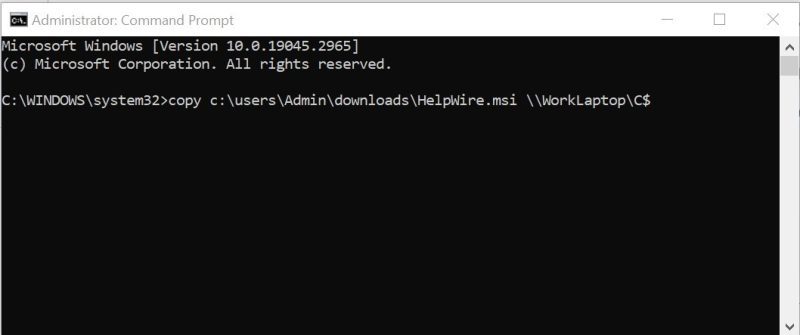
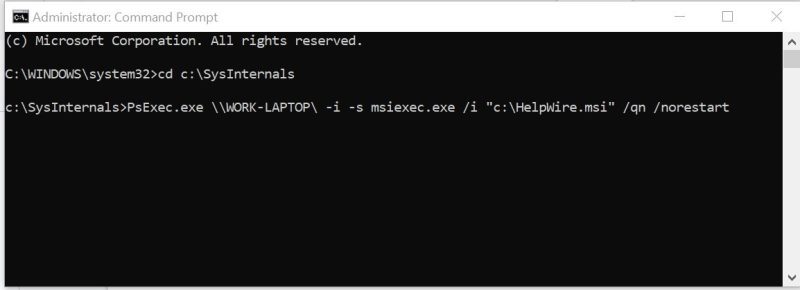
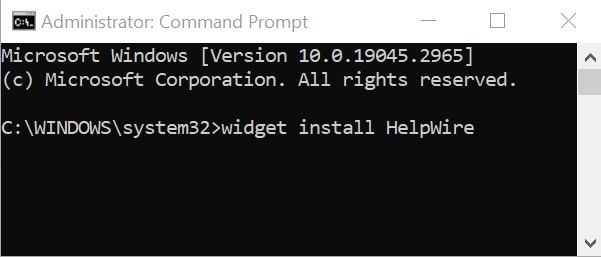


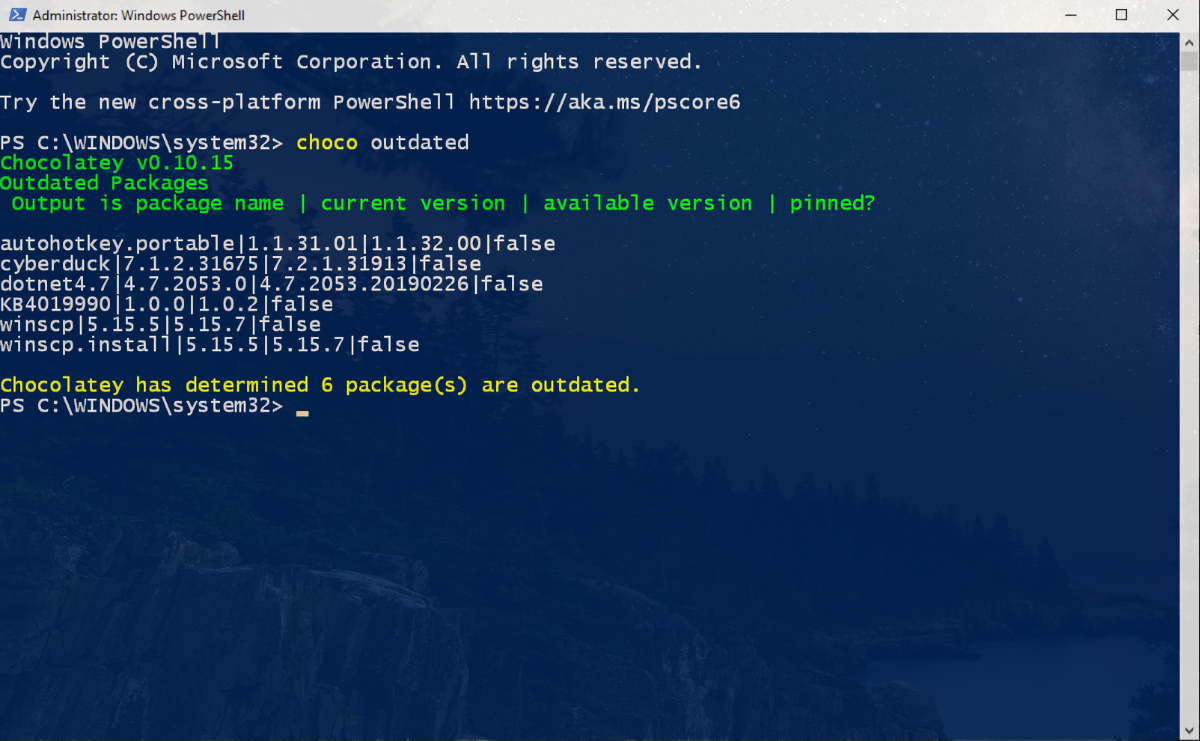 Is There a Chocolatey GUI?
Is There a Chocolatey GUI?